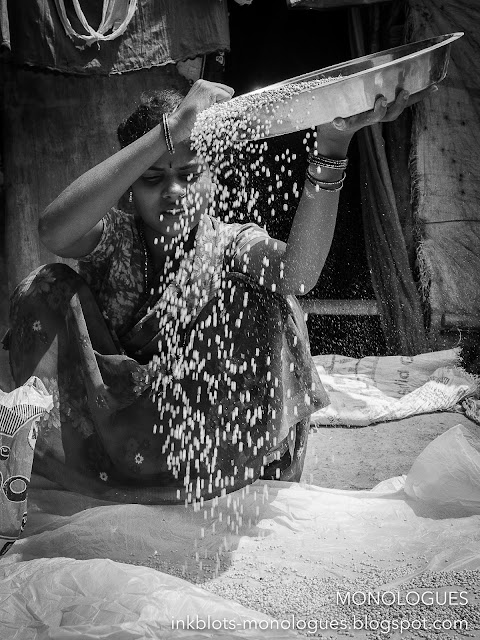A road in Kapangan
It has been ages since I stepped on the soil of Kapangan, Benguet, again. Between 1988 and 1989, I had the chance to tag along with another group in our psychology practicum class at Saint Louis University, for our guidance and counseling extension services for high school students at St. Theresa's School.
If my memory serves me right, I went there not for counseling services but for a photography session with my college buddy who was my willing model in the rolling hills behind the chapel. Now I could only grin at the thought of me and my friend having some fun time, to the consternation of our practicum instructor (also a photography hobbyist and one of the persons who influenced me into photography) who was already waiting for us in the service van back to Baguio City.
I never imagined going back to Kapangan. I was excited as soon as I learned that I was going there for a rehabilitation project for the victims of typhoon Pepeng. I was relieved that the road to Kapangan is better now except for a few hundred meters that still need to be cemented, and some portions that need to be rehabilitated.
Back then, I went only up to St. Theresa's School, which, unfortunately, looks more dilapidated now (though I never had the chance to get down and take some photos).
Just like St. Theresa's School, some roads in Kapangan are still the same or have gone worse after the typhoon Pepeng and after years of neglect. Just like the old days, public transportation is only once a day, especially those in the interior barangays with roads that can only be negotiated by a sturdy 4x4, those huge jeeps specially fabricated for a challenging road condition, mini dump trucks (elf) and 10-wheeler trucks.
In Brgy. Ampongot, people still go home to their small ancestral villages by foot, which I, myself, has tried (but not as far as what the locals do in their daily lives). As a development worker, concerns like medical emergencies, buying daily provisions, education, health, livelihood, and so many other needs crop up in my mind. It is just so overwhelming that I begin to think how the Ibalois and Kankanaeys survive in this place when, at this point, everything already seems so modern and advanced. It is just a consolation, though, that their ancestors did live before them--and so they, too, can.
I just hope that going back there would bring something good for them--one more step, and hopefully, the realization of the assistance they sought will soon be given.







Comments
Post a Comment
Thank you for visiting MONO-LOGUES!
I would love to hear about your thoughts on this post.
Thanks!